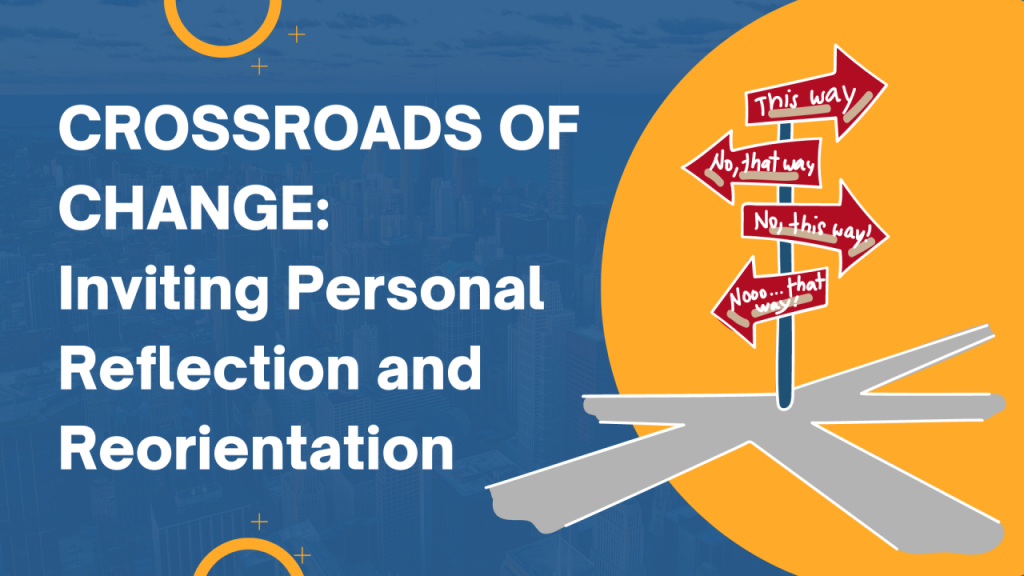
Observing numerous change projects, I’ve noted a common phenomenon: as practitioners we often present change as one-directional and absolute. I have for example accompanied a few global restructurings as well as launches of new admin organizations including Global Business Services (GBS). This thinking leads us to see the world black and white – an impacted person either adopts the change or shows “resistance.” But in reality, people have other options – outside options.
Such transformations not only redefine organizational operations but also prompt crucial personal reflections among employees:
“Is this still the organization I want to be part of?”
That’s something we shouldn’t ignore but embrace and invite.
The Dual Impact of Organizational Change
The Organizational Shift: Assume your organization is launching a centralized GBS or is redefining its operating model – such system shifts can streamline operations and enhance global integration. However, they may also be an indicator of where the company is developing to and even represent profound turning points for the company.
The Personal Reevaluation: It is during these pivotal changes that employees often take stock of their personal alignment with the company’s evolving direction. They assess whether the cultural and operational shifts still resonate with their professional goals and personal values. This reflection is crucial and can lead to a reevaluation of their place within the organization. This internal reflection happens all the time and people may come to different conclusions, for example:
- “I support the vision of the organization and I embrace this change.”
- “This is going in the somewhat wrong direction. I will try and impact the change.”
- “This doesn’t feel like my company anymore!”
When you talk to individuals that are going through an organizational change – you may actually here some of these statements. I certainly have heard the latter one many times. And while it may sound harsh and critical, it also presents an opportunity to everyone involved. It gives the person a chance to identify a more promising and satisfying path for herself (this could include an internal move, or even looking for outside opportunities). It also benefits the team or organization, which may eventually go forward with colleagues who share and support the same vision.
Consequently, we shouldn’t ignore the relevance of such points for individual reflection and re-orientation. But how to factor it in?
Communicating Change as a Two-Way Street
Transparency in Objectives: From the onset of a change initiative, it’s vital to be clear about the goals and the envisioned future post-change. Transparency helps employees understand the rationale behind the change and what it means for the company and their roles. Share your vision of what the future organization will look like. How will it look, feel and behave?
Creating Space for Reflection: Change should not be a rush. Providing employees with time and space to reflect on how changes affect their professional lives and personal alignment with the company is essential. This consideration can foster a supportive environment that respects individual decision-making processes. The earlier a new direction becomes clear, the more time and headspace people have to reflect whether they still see a good fit between themselves and the to-be organization.
Supporting Diverse Outcomes: We must acknowledge and embrace the outcomes of these reflections. If an employee decides their path no longer aligns with the organization due to the changes, this decision should be respected and supported. Such departures are natural and valid responses to change. Again there is a practical timing factor here – if you allow the reflection and decision early in the process, you gain time to either correct your path or to fill any gaps that open up.
Case example: Consider a multinational corporation that implemented a GBS system as part of a strategic overhaul to enhance efficiency and integrate globally. While the new system promised improved coordination and reduced operational costs, it required employees to adapt to new processes and reporting structures. Just to name one dimension of this change: A ticket system and a support service team now sitting in Manila may increasing efficiency and manageability, but it makes communication more anonymous and more distant. It’s just a fair thought of some colleagues that this is not how they would like to work. During this transition, the company prioritized open forums and feedback mechanisms, allowing employees to voice concerns and reflect on their roles within the new structure. It also communicated early and transparently – including a clear and honest look and feel of the future state, trying not to bee too promotional and glossy. This approach not only facilitated smoother adoption of the new system but also respected individual choices, including the departure of some employees who felt the new direction no longer matched their career aspirations or desired way of working and culture.
Key Takeaway: Change management is not just about achieving strategic goals but also about navigating the personal and professional dynamics that these goals disrupt. By promoting a culture of transparency, reflection, and respect for individual choices, organizations can ensure that changes are both effective and humane. This approach not only supports the organizational growth but also honors the personal journeys of those who contribute to its success.
Have you been in situations where people chose NOT to be part of a change but leave the organization? How did this feel and what did it do to your change?
#ChangeManagement #OrganizationalCulture #EmployeeEngagement #Leadership #BusinessTransformation
This is a copy of the same post on my LinkedIn blog. To comment and join the discussion on this topic switch to LinkedIn. Follow me for regular updates and blog articles: https://www.linkedin.com/in/drnilskoenig/
